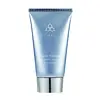What's inside
What's inside
 Key Ingredients
Key Ingredients

 Benefits
Benefits

 Concerns
Concerns

 Ingredients Side-by-side
Ingredients Side-by-side

Water
Skin ConditioningGlycerin
HumectantCarbomer
Emulsion StabilisingMaltodextrin
AbsorbentPhenethyl Alcohol
MaskingCaprylyl Glycol
EmollientSodium Hydroxide
BufferingAlcohol Denat.
AntimicrobialSodium Hyaluronate
HumectantAloe Barbadensis Leaf Juice Powder
Skin ConditioningPotassium Sorbate
PreservativeSyringa Vulgaris Leaf Cell Culture Extract
Skin ConditioningSodium Metabisulfite
AntioxidantLonicera Japonica Flower Extract
Skin ConditioningSantalum Austrocaledonicum Wood Oil
MaskingTrisodium Ethylenediamine Disuccinate
Hamamelis Virginiana Water
AstringentLavandula Angustifolia Oil
MaskingRosa Damascena Flower Oil
MaskingCitric Acid
BufferingLonicera Caprifolium Flower Extract
PerfumingCananga Odorata Flower Oil
MaskingChlorophyllin-Copper Complex
AntioxidantTotarol
AntioxidantAcetyl Tributyl Citrate
MaskingAlcohol
AntimicrobialCinnamomum Camphora Bark Oil
MaskingCitrus Aurantium Dulcis Peel Oil
MaskingPhenyl T-Butylnitrone
AntioxidantWater, Glycerin, Carbomer, Maltodextrin, Phenethyl Alcohol, Caprylyl Glycol, Sodium Hydroxide, Alcohol Denat., Sodium Hyaluronate, Aloe Barbadensis Leaf Juice Powder, Potassium Sorbate, Syringa Vulgaris Leaf Cell Culture Extract, Sodium Metabisulfite, Lonicera Japonica Flower Extract, Santalum Austrocaledonicum Wood Oil, Trisodium Ethylenediamine Disuccinate, Hamamelis Virginiana Water, Lavandula Angustifolia Oil, Rosa Damascena Flower Oil, Citric Acid, Lonicera Caprifolium Flower Extract, Cananga Odorata Flower Oil, Chlorophyllin-Copper Complex, Totarol, Acetyl Tributyl Citrate, Alcohol, Cinnamomum Camphora Bark Oil, Citrus Aurantium Dulcis Peel Oil, Phenyl T-Butylnitrone
Water
Skin ConditioningButylene Glycol
HumectantGlycerin
HumectantDimethicone/Vinyl Dimethicone Crosspolymer
Skin ConditioningDimethicone
EmollientNylon-12
Carbomer
Emulsion Stabilising1,2-Hexanediol
Skin ConditioningCaprylyl Glycol
EmollientDimethicone Crosspolymer
Emulsion StabilisingHydroxyacetophenone
AntioxidantSodium Polyacrylate Starch
AbsorbentCaprylic/Capric Triglyceride
MaskingMethyl Trimethicone
Skin ConditioningSodium Hydroxide
BufferingHydrogenated Lecithin
EmulsifyingMaltodextrin
AbsorbentSodium Hyaluronate
HumectantPistacia Lentiscus Gum
MaskingPhenethyl Alcohol
MaskingSodium Carbonate
BufferingEthylhexylglycerin
Skin ConditioningHamamelis Virginiana Leaf Extract
Skin ConditioningPolyphosphorylcholine Glycol Acrylate
Water, Butylene Glycol, Glycerin, Dimethicone/Vinyl Dimethicone Crosspolymer, Dimethicone, Nylon-12, Carbomer, 1,2-Hexanediol, Caprylyl Glycol, Dimethicone Crosspolymer, Hydroxyacetophenone, Sodium Polyacrylate Starch, Caprylic/Capric Triglyceride, Methyl Trimethicone, Sodium Hydroxide, Hydrogenated Lecithin, Maltodextrin, Sodium Hyaluronate, Pistacia Lentiscus Gum, Phenethyl Alcohol, Sodium Carbonate, Ethylhexylglycerin, Hamamelis Virginiana Leaf Extract, Polyphosphorylcholine Glycol Acrylate
 Reviews
Reviews

Ingredients Explained
These ingredients are found in both products.
Ingredients higher up in an ingredient list are typically present in a larger amount.
Caprylyl Glycol is a humectant and emollient, meaning it attracts and preserves moisture.
It is a common ingredient in many products, especially those designed to hydrate skin. The primary benefits are retaining moisture, skin softening, and promoting a healthy skin barrier.
Though Caprylyl Glycol is an alcohol derived from fatty acids, it is not the kind that can dry out skin.
This ingredient is also used as a preservative to extend the life of products. It has slight antimicrobial properties.
Learn more about Caprylyl GlycolCarbomer is a polymer of acrylic acid. Its main role is to create a gel consistency.
A high amount of carbomer can cause pilling or balling up of products. Don't worry, most products contain 1% or less of carbomer.
Glycerin is already naturally found in your skin. It helps moisturize and protect your skin.
A study from 2016 found glycerin to be more effective as a humectant than AHAs and hyaluronic acid.
As a humectant, it helps the skin stay hydrated by pulling moisture to your skin. The low molecular weight of glycerin allows it to pull moisture into the deeper layers of your skin.
Hydrated skin improves your skin barrier; Your skin barrier helps protect against irritants and bacteria.
Glycerin has also been found to have antimicrobial and antiviral properties. Due to these properties, glycerin is often used in wound and burn treatments.
In cosmetics, glycerin is usually derived from plants such as soybean or palm. However, it can also be sourced from animals, such as tallow or animal fat.
This ingredient is organic, colorless, odorless, and non-toxic.
Glycerin is the name for this ingredient in American English. British English uses Glycerol/Glycerine.
Learn more about GlycerinMaltodextrin is a polysaccharide. It is derived from starch such as rice, corn, wheat, or potato starch.
In food, Maltodextrin is used to improve the texture and thicken a product. Due to its structure, it can help create a gel texture. As an emulsion stabilizer, it helps keep the ingredients in a product together.
As a polysaccharide, Maltodextrin has moisturizing properties. Polysaccharides are a type of carbohydrate. The top layer of skin uses polysaccharides to retain water, keeping the skin hydrated.
Maltodextrin is water soluble and has a sweet taste.
Learn more about MaltodextrinPhenethyl Alcohol is a colorless and aromatic alohol. It is naturally occuring in essential oils.
The scent of this ingredient is floral and often compared to rose.
Like other alcohols, this ingredient helps prevent the growth of bacteria. However, its main purpose is to impact a fragrance.
Learn more about Phenethyl AlcoholSodium Hyaluronate is hyaluronic acid's salt form. It is commonly derived from the sodium salt of hyaluronic acid.
Like hyaluronic acid, it is great at holding water and acts as a humectant. This makes it a great skin hydrating ingredient.
Sodium Hyaluronate is naturally occurring in our bodies and is mostly found in eye fluid and joints.
These are some other common types of Hyaluronic Acid:
Learn more about Sodium HyaluronateSodium Hydroxide is also known as lye or caustic soda. It is used to adjust the pH of products; many ingredients require a specific pH to be effective.
In small amounts, sodium hydroxide is considered safe to use. However, large amounts may cause chemical burns due to its high alkaline.
Your skin has a natural pH and acid mantle. This acid mantle helps prevent harmful bacteria from breaking through. The acid mantle also helps keep your skin hydrated.
"Alkaline" refers to a high pH level. A low pH level would be considered acidic.
Learn more about Sodium HydroxideWater. It's the most common cosmetic ingredient of all. You'll usually see it at the top of ingredient lists, meaning that it makes up the largest part of the product.
So why is it so popular? Water most often acts as a solvent - this means that it helps dissolve other ingredients into the formulation.
You'll also recognize water as that liquid we all need to stay alive. If you see this, drink a glass of water. Stay hydrated!
Learn more about Water